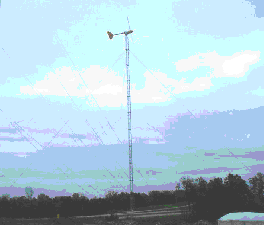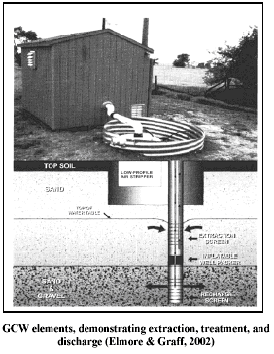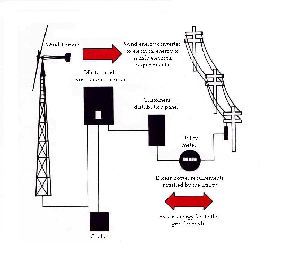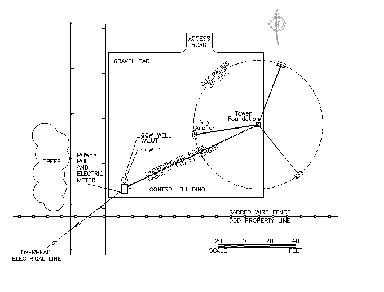

Wind Powered Groundwater Remediation
Project
Overview
The Fall 2003 Geological Engineering Senior Design Class from the University
of Missouri-Rolla accepted a project near Mead, Nebraska. This site was
once the location of the Nebraska Ordnance Plant (NOP). The former NOP
site was included on the National Priorities List under the Comprehensive
Environmental Response, Compensation, and Liability Act (CERCLA or Superfund)
on August 30, 1990.
Since June 2000, remedial action has been taken to remove trichloroethylene
(TCE) from the groundwater using a groundwater circulation well (GCW)
and an air stripper.
Approximately 23 billion gallons of contaminated groundwater underlies 6,000 acres of the site. The facility produced ordnance from 1942 to 1956 during World War II and the

Korean War. TCE was used as a degreaser during the missile silo construction.
Spent TCE was released to the ground and entered the groundwater.
The purpose of this project is to provide a design and work plan for
the construction of a Renewable Energy Source that is to supplement energy
supplied by fossil fuels. The demonstration will consist of the installation
of a wind turbine system at this site. The demonstration period will consist
of the wind turbine operation from December 4, 2003 to September 30, 2004.
The scope of this design project has two objectives:
· Characterize the reduction in the consumption of utility power
by comparing the quantity of wind power consumed during the demonstration
to the historical GCW energy consumption.
· Characterize the mass quantity of the contaminant known as TCE
removed from groundwater during the demonstration period.




The BWC 10kW Excel-S Wind Turbine, which includes a Grid Inter-tie system, was chosen for this project. The Grid Inter-tie system is used to transform the power generated by the wind turbine and convert it into usable energy for the GCW operation. The Grid Inter-tie system also allows additional power to be obtained from the utility grid when the wind turbine does not produce sufficient power.
The tower selected to mount the BCW 10kW Excel-S Wind Turbine is a 100-foot guyed-lattice tower. Placement of the tower will be near the center of the GCW site with guy anchors strategically located to provide maximum tower stability against the northwesterly prevailing winds.
In the future, one modification that can be implemented to the wind turbine
system design is a conversion of the Grid Inter-tie System to an off grid
system. This conversion would allow the GCW's to be completely self-sufficient
and could be installed and operated at remote locations where grid electricity
does not already exist.

The implementation of wind power combines an opportunity to conserve energy by using a renewable energy resource and also eliminates harmful emissions that occur from the use of fossil fuels. Bergey Windpower Company, Inc. (BWC) states that "A 10 kW Bergey GridTek system will offset approximately 1.2 tons of air pollutants and 250 tons of greenhouse gases over its 30-year operating life." The addition of the wind turbine will save approximately $1,000 annually in operation costs.
Numerical Facts
· The wind turbine system is projected to produce 16,617 kWh annually.
· The average annual operation cost of the existing system is
$2,225 with the addition of the wind turbine this cost will be reduced
to $1,216.
· The wind turbine system will reduce fossil fuel consumption by approximately 75 percent.

For more information concerning this project, please contact:
Dr. Curt Elmore
Department of Geological Engineering
University of Missouri - Rolla
1870 Miner Circle, 129 McNutt Hall
Rolla, MO 65409
Phone: (573) 341-6784 E-Mail: elmoreac@umr.edu
